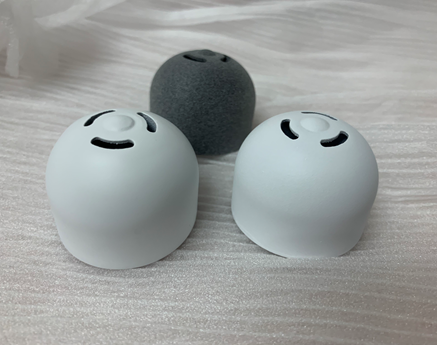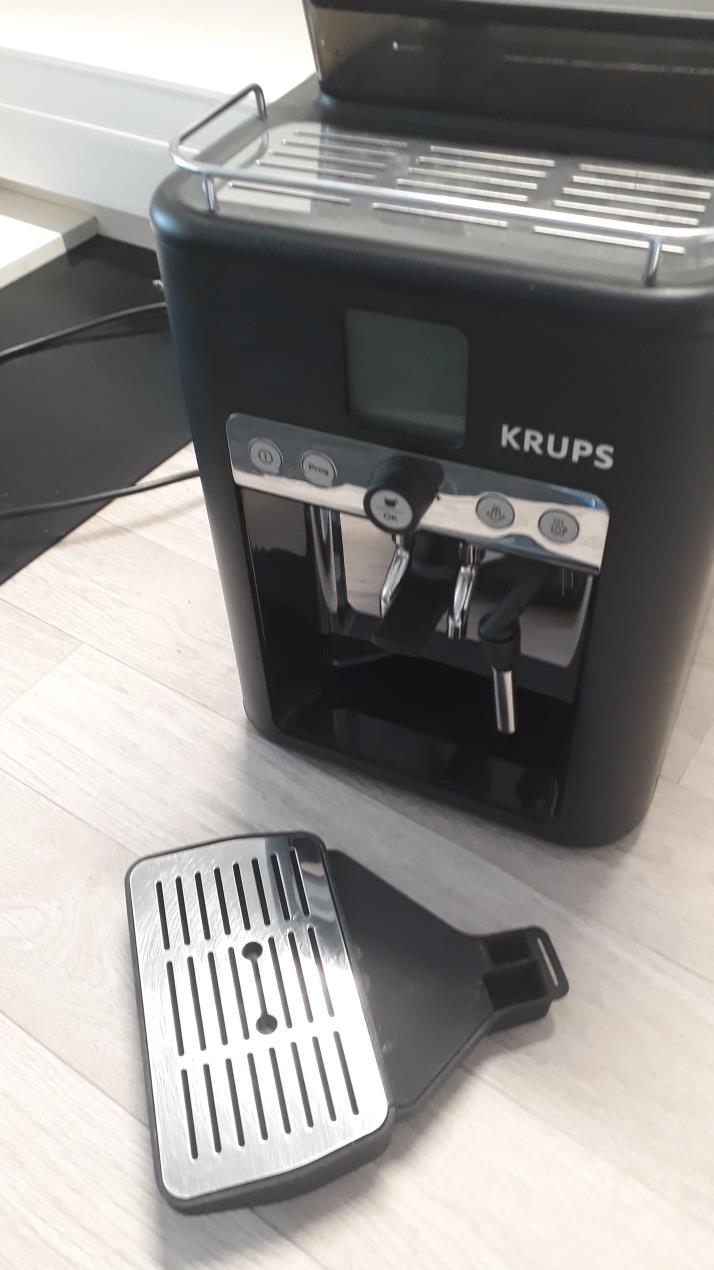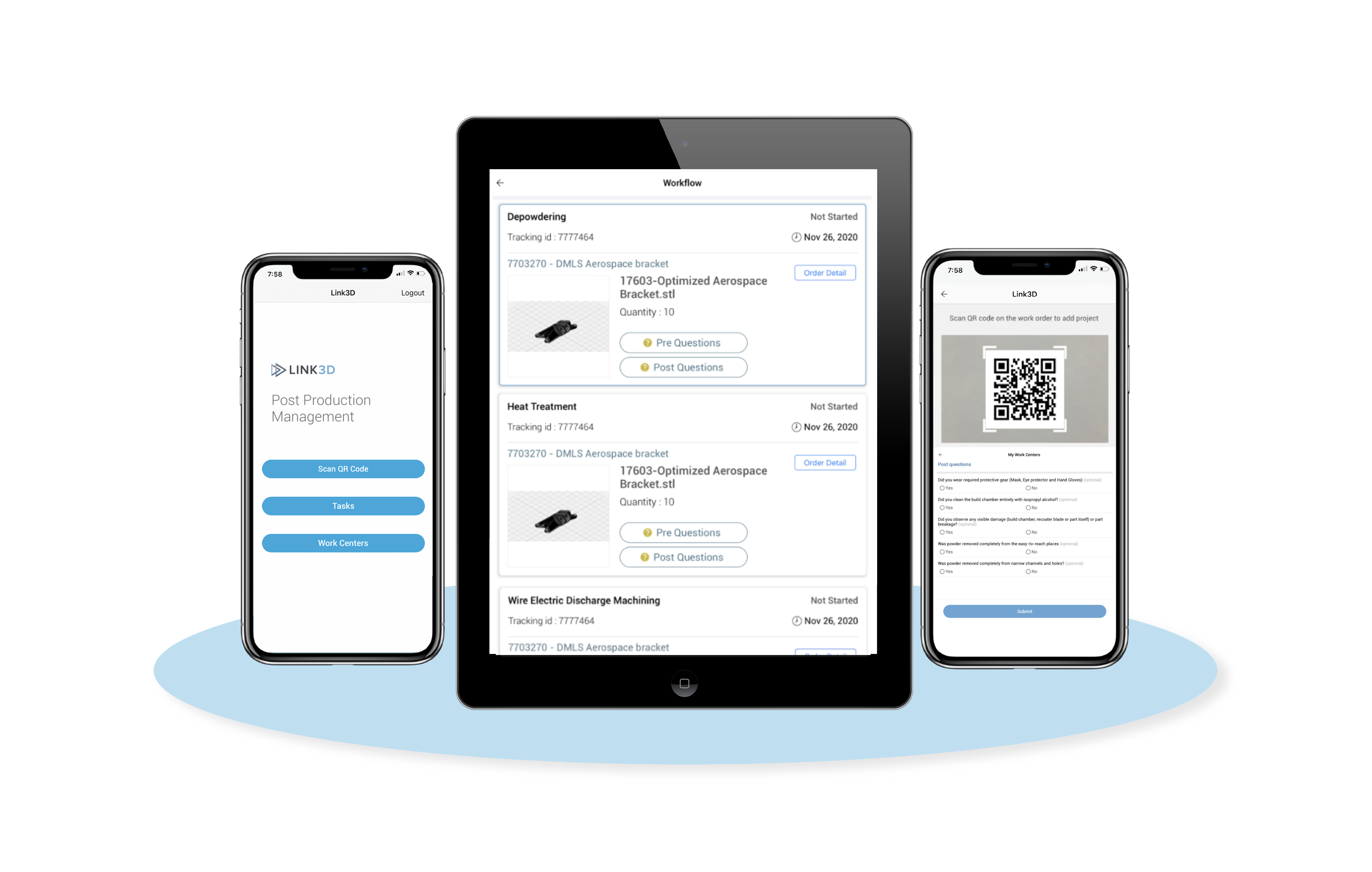Companies that sell consumer electronic goods in the European Union (EU) will be obliged to ensure they can be repaired for up to a decade, as a result of new Right to Repair legislation passed by the European Parliament.
3D Printing Industry asked EOS, Spare Parts 3D, DiManEx, Ricoh 3D and Link3D for their thoughts on how 3D printed spare parts could help consumer appliance manufacturers adhere to the legislation, while avoiding large physical stocks of replacement parts and subsequent incurring costs.
From summer 2021, the new EU Ecodesign and Energy Labelling regulation will give consumers the ‘right to repair’ on the goods they buy, meaning manufacturers will be legally required to make spare parts for products available to consumers for up to 10 years. The goods in question include refrigerators, dishwashers, hairdryers, lights, TVs, and so on, although appliances such as phones and laptops are not covered by the new laws.
The legislation has arisen as a result of concerns that goods aren’t lasting as long as they should, with some environmentalists claiming manufacturers are designing their devices with planned obsolescence – essentially product designed with a deliberately short lifespan. This ultimately leads to high levels of electrical waste, 53 million tonnes of which is produced each year according to the Right to Repair campaign, a coalition of European organizations pushing for system change around repair. The campaign states that only 15-20 percent of this waste is recycled, which could be significantly improved if products were to be repaired, rather than replaced.
With manufacturers of consumer electronics staring down the barrel of stocking hundreds of thousands of spare parts, there could be a golden opportunity arising for 3D printing, in particular for companies in the sector that offer digital inventories and distributed manufacturing facilities.

“Only a matter of time” before the rise of independent spare parts platforms
Leading 3D printer manufacturer EOS predicts the new ‘Right to Repair’ initiative could have a positive effect generally, as extending the lifetime of a product is both economically efficient and contributes to a more thoughtful use of resources. The same ethos can be applied to machinery and manufacturing equipment, according to Additive Manufacturing Consultant at EOS, Nicolas Dill, where end-users benefit from extended machine lifetimes.
“For household appliances and other industries, this results in a shift to new business models in spare parts management at the B2B and B2C level,” he explained. “Next to independent repair service providers that will drive the demand for 3D printed spare parts, B2C service platforms will emerge, granting the consumer a ‘right to download and produce’ a certain file for a small fee. This disconnects digital from physical ownership and transfers the production risk to the service provider chosen by the customer. We expect similar setups to generate substantial business potential in the long run.”
Dill believes it is “only a matter of time” before the first independent spare parts platforms for both B2B (business-to-business) and B2C (business-to-consumer) applications emerge to create a touchpoint for former OEM customers with their services. One question central to this, he said, will not only be who owns the part data and the IP, but also who controls the service and revenue stream.
“Many AM enthusiasts who follow the industry closely will be aware that this shift has already begun on a private, B2C level,” he continued. “Platforms like Thingiverse or GrabCAD facilitate the sharing of ideas and repair geometries for consumer household products. For AM the lowest entry barrier currently is the phase of no availability and the size of opportunity will depend on the availability of scan-to-print workflows for single-event parts and small series to create a digital file at cost but also the suitability of materials to comply with the technical requirements, such as flame retardancy or CTI values.”
EOS will monitor these regulatory changes closely, believing it is in a strong position to cater to the needs of these developments with its global system footprint and wide range of materials. According to Dill, about five percent of an average spare part inventory is suitable for additive manufacturing, however in the long run he expects this to double to 10 percent as 3D printing is more broadly adopted and more material data becomes available.
“A digital inventory must be the solution to overcome existing challenges, for example in spare parts management, such as obsolescence, long lead times, overpriced small series, and warehousing costs,” he said. “AM as a digital manufacturing technology has a strong value proposition and low entry barrier to tackle these challenges but is not the only technology to address the customer pains in the aftermarket. A virtual inventory should integrate all available manufacturing technologies.”
Dill identifies three key hurdles that must be overcome in order to enable a digital inventory and facilitate on-demand manufacturing; cost-efficient qualification of single-event parts and small series, scalable data generation and management in digital inventory and production at cost, and analysis of the total cost of ownership and fair selection of the most cost-efficient spare parts.
“To service the household appliances market, the third hurdle is of utmost importance,” he said. “In a cost-driven market environment, the considerations for the total cost of ownership of a part must include all cost along its lifecycle for a fair evaluation of cost-efficiency. Consequently, the concept of the digital inventory is extended and becomes a subset of the digital value chain.”
Regarding IP, Dill suggests parts that are adapted to be 3D printable or re-designed may end up in a “regulatory grey zone”, as the geometry has been changed and the manufacturing technology switched. However, he also acknowledged that once the end of service of a product has been reached, the market could potentially open up to third party providers who, by entering the market at the end of the lifecycle, may be able to reduce risk and avoid IP rights conflict for both customers and third-party providers. He concluded:
“Going forward, we expect licensing of original part data to accelerate the role of 3D printing in the aftermarket as it allows third parties to manufacture OEM components and OEMs to remain in control of a revenue stream that would be potentially lost otherwise.”

The importance of digitalizing spare parts inventories
As suggested by its name, spare parts are the core business of Spare Parts 3D (SP3D), a start-up founded in 2015 focusing on providing on-demand distributed 3D printing of spare parts for OEMs. Having worked with key players in the home appliance sector for several years, the firm believes it is well-positioned to take advantage of the new legislation, with VP of Sales, Christian Darquier, observing an ongoing cautious increase in these companies adopting additive manufacturing.
“This is very positive; home appliances companies now need to adopt a more systematic approach to really harness the value of AM and look at AM as a systematic option for spare parts and the resolution of their supply chain issues,” he said. “The technical AM solutions offered by the industry at large can address most, if not all, constraints of home appliance parts, and provide results as good as traditional manufacturing solutions.”
To do this, Darquier offers, these companies now need to digitalize their spare parts inventory so that it is “AM ready”. SP3D will then take the ERP/PLM data related to the parts and deploy its DigiPart software to identify and convert them into technically and economically suitable candidates for 3D printing. Clients can then upload 3D files of the parts to finalize the printability analysis process, and can carry out this analysis ‘at scale’ up to several million parts.
The dynamic nature of an AM ready inventory, Darquier said, means that it can be regularly updated with new materials and technologies as they are developed, so parts previously identified as not printable could become printable as new innovations come to light.
“If our clients have the 3D file then we move to print the part,” he continued. “The important point then becomes the access to the qualified printing capabilities in a given location at a given time. Today at SP3D we have a network of 150 contractualized production suppliers covering 20 countries. Distributed manufacturing will be a key solution for the supply chain of home appliances companies, allowing them to print as close as possible to the final user.”
Potential challenges around IP are a real question for the industry, he added, with currently no solution available to completely protect the IP of an OEM throughout the whole journey from file to print, although he acknowledges this is a fast-moving area.
“Blockchain is a technology well suited to address some of the issues around protection and is gaining a lot of momentum,” he said. “But most existing solutions are partial ones that exist for certain AM technologies and not for others. One limitation I can think of is the fact that the protection often stops at the printer and if the parts need post-processing, rarely this protection can be extended to the post processes.”

3D printing is not a goal in itself, but a “means to an end”
DiManEx, a 3D printing supply chain software provider based in the Netherlands, sees the new EU legislation as a significant opportunity for its customers from both a sustainability angle in which they can improve their environmental footprint, and from an accessibility perspective to make their parts available on-demand.
Tibor van Melsem Kocsis, Founder and CEO of DiManEx, believes creating a digital inventory could prevent manufacturers having to stock thousands of parts in warehouses that take up huge amounts of space.
“If we can create a digital inventory to understand which parts are the right ones to print on-demand, and ultimately make that accessible to end customers or repair shops and companies, then this will do a couple of things,” he said. “It would indeed reduce their environmental footprint, and therefore make the image of these companies and brands a lot better. So I think this will work if there is a commercial model to it that works for everyone.”
For instance, DiManEx’s platform is dedicated to optimizing its customers’ supply chains through digitization, and identifying potential savings for parts using 3D printing. The company provides an end-to-end platform supported by artificial intelligence (AI) and machine learning for part identification, design, production, and delivery. Having previously referred to itself as the “Uber of 3D printing”, DiManEx has a global network of manufacturing locations for the printing of parts, enabling its customers to print their products on-demand, wherever they are.
“Through our platform, we can help these companies to mitigate the risk of having too much stock through digitization,” van Melsem Kocsis continued. “If you have a digital model, there is no concern anymore that it should be 10, 12, or 14 years, because the model would allow you to print the part for the next 50 years, for example, if it makes sense to do so.”
Regarding concerns around IP protection and reproducing OEM components, van Melsem Kocsis offered an analogy with the music industry, which has undergone a digital transformation over the last 20 years, despite initial concerns that music companies would lose their business.
“What we see now is the companies that embraced digitalization are still there and the ones who desperately tried to prevent it happening are no longer around, so I think it is important that companies embrace this new technology,” he said. “What we see with appliances companies, and other clients of ours, is in many cases they own the IP on their parts, and they will continue to own it, we will not take it from them. One model could be that they have their own digital library with the parts that can be printed, so it could be an internal process where an appliance company prints the parts and ships it directly to the customer to replace on their appliance, and in that way nothing changes.”
Van Melsem Kocsis added that those companies who take a proactive approach will be more able to protect their position and minimize the risk of piracy, as well as customers taking repairs into their own hands rather than waiting on spare parts with long lead times. He also predicts an increase in the adoption of 3D printing by appliance manufacturers in light of the new legislation.
“I think there will be a surge, and a challenge for many companies will be the economic model, looking at the total cost, including production costs and waste, and how they can rethink their supply chain,” he added. “3D printing is not a goal in itself, but it is a means to an end, and I think the repair law could be an incredible catalyst for this development for appliances companies.
“There are still a few domains where it is clear 3D printing does not make sense, but there are a lot of parts and appliances where it does.”

3D printing is “already in the starting blocks” to meet spare part demand
Ricoh 3D, the 3D printing subsidiary of Japanese electronics and imaging firm Ricoh, operates in around 200 countries and regions globally to provide clients with a full range of end-to-end 3D printing services. The firm’s Telford facility houses a variety of machines including FDM, SLS, and MJF printers.
According to Mark Dickin, Ricoh 3D’s Additive Manufacturing and Molding Engineering Manager, the company’s 3D printing capabilities could help to reduce the need for companies to stock large physical inventories that take up vast amounts of warehouse space.
“Additive manufacturing can play a huge role here,” he said. “Some parts will be frequently required and it makes sense for manufacturers to hold these in physical form, but 3D printing means the parts which are less in demand can be held digitally as CAD data. With only a data file needed, why stop at a 10-year guarantee?”
Dickin believes 3D printing has the potential to redefine how spare parts are controlled and supplied, and even make large storage facilities for parts and their associated tooling redundant.
“3D printing means these parts can be produced on-demand in hours, rather than waiting weeks for the long lead-time and expensive tooling required for traditional manufacturing methods,” he added. “We have already seen many market leaders, including car manufacturers and makers of white goods, harnessing the power of 3D printing and creating a digital spare parts inventory for rare low volume parts, but we’d certainly expect to see this increase with this news.”
Although, Dickin points out that for this to become a reality, there needs to be a shift in the perception of 3D printed parts “at all levels”. Despite 3D printed parts not always able to look exactly like the original part, he suggests the performance and environmental benefits will accelerate user acceptance among consumers and manufacturers alike, as well as the cost-effective customization possibilities.
“3D printing is without doubt the most agile technology and is already in the starting blocks to meet the demand for spare parts that this news is likely to generate.”

Reducing inventory and supply chain costs with a fully digital thread
Additive manufacturing software company Link3D could also be well-positioned to aid manufacturers of consumer electronics in their spare parts production, as it provides a suite of digital software systems to help optimize workflows and production processes across 3D printing.
In addition to its additive manufacturing workflow software, the company launched its first mobile post-production management app last year, enabling companies to streamline their post-production processes into a “truly digital thread” to allow the efficient end-to-end management of 3D printed parts.
Link3D’s Regional Director EMEA, Daniel Landgraf, believes 3D printing could deliver significant cost savings to home appliances manufacturers in light of the new legislation.
“Since the EU has adopted new standards for ‘right to repair’ for household goods, additional OEMs should consider strategies that enable digital inventory and on-demand manufacturing to deliver quality ‘right to repair’ parts,” he said. “Manufacturers pursuing this digital inventory strategy could minimize and even reduce inventory and supply chain costs that might be incurred due to the ‘right to repair’ regulations.”
In order to achieve these cost savings, Landgraf emphasizes the importance of a seamless connection between customer demand all the way through part printing, post-processing, and quality control during spare part production.
“A fundamental component of scaling will include a connected network of hardware and software – necessary for the visibility needed in a distributed additive manufacturing network,” he explained. “Important software decisions and vendor partnerships are instrumental in the enablement of the end-to-end strategy.”
Having observed several customers experience increased throughput and higher machine utilization once they enabled digital workflow solutions, Link3D anticipates seeing further productivity gains as it adds further integrations and connections to its software.

An opportunity for 3D printing
While there are some challenges to 3D printing spare parts for consumer electronics OEMS that need addressing, such as concerns around IP protection and data security, it seems clear that additive manufacturing could potentially solve a number of problems facing manufacturers as the new Ecodesign regulations come into force later this year.
Digital spare part inventories and global 3D printing networks could significantly reduce the physical stock risks for OEMs, leading to reduced costs, faster lead times for parts, and optimized supply chains. This in turn could see the rise of new independent spare parts platforms at different levels of the supply chain, including new business models for consumer appliance manufacturers and an increase in the adoption of additive manufacturing and other advanced technologies within these sectors.
There could also be an opportunity for online 3D file marketplaces such as MyMiniFactory to benefit from an increase in end-customers looking for cost-effective replacement parts with a quick turnaround. MyMiniFactory has a digital STL file marketplace that hosts over 100,000 3D printable designs, including spare parts for consumer electronic appliances.
Going forwards, the EU’s Right to Repair campaign will lobby for the regulations to extend to cover more devices, such as laptops and mobile phones, and will call for a “universal right to repair” which would see the access to spare parts and repair manuals for the lifetime of a product opened up to everyone, including consumers, instead of just “professional repairers”.
Subscribe to the 3D Printing Industry newsletter for the latest news in additive manufacturing. You can also stay connected by following us on Twitter and liking us on Facebook.
Looking for a career in additive manufacturing? Visit 3D Printing Jobs for a selection of roles in the industry.
Featured image shows consumer electronics appliances will need to be able to be repaired for up to 10 years as part of the new EU Ecodesign regulations. Photo via Photo Mix.



